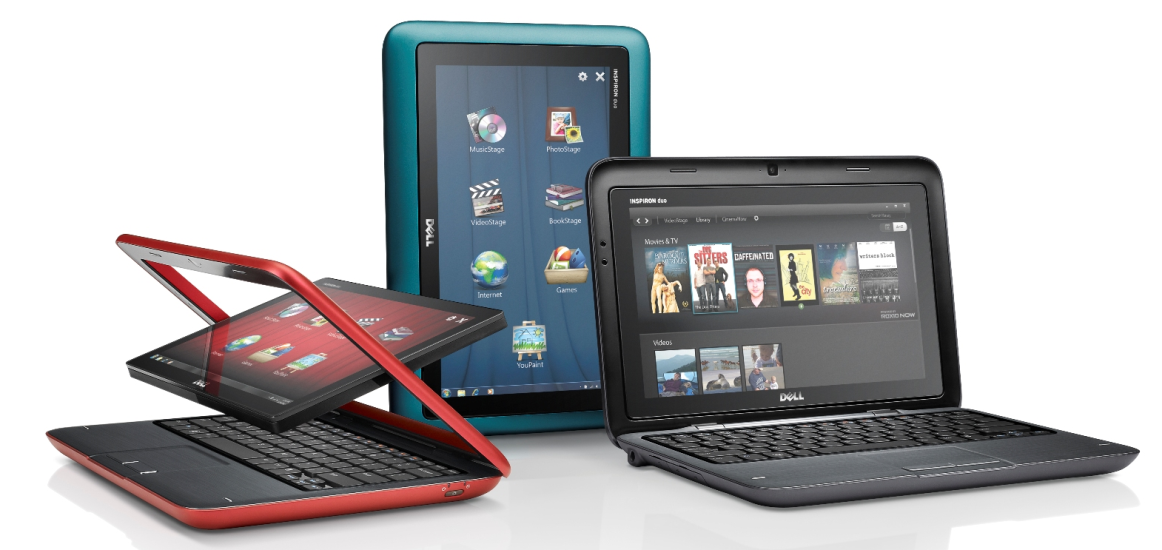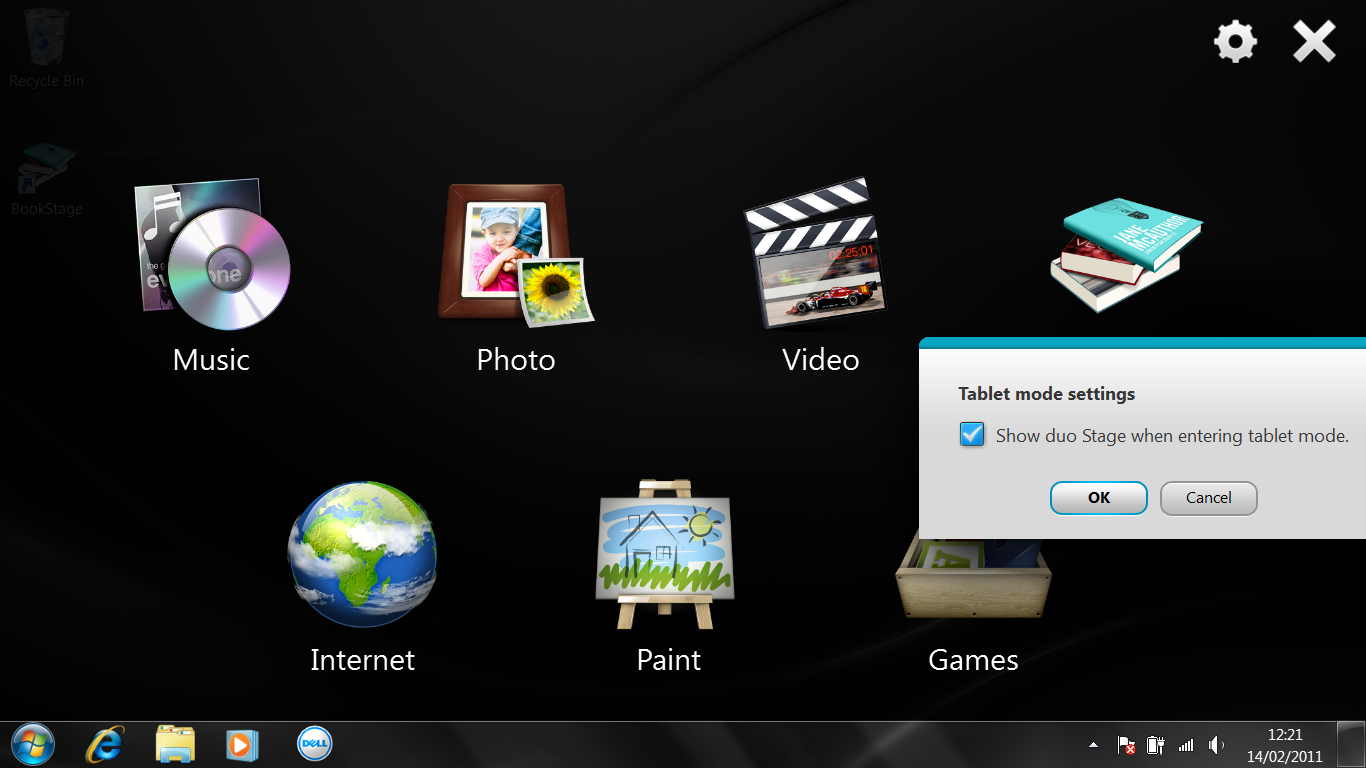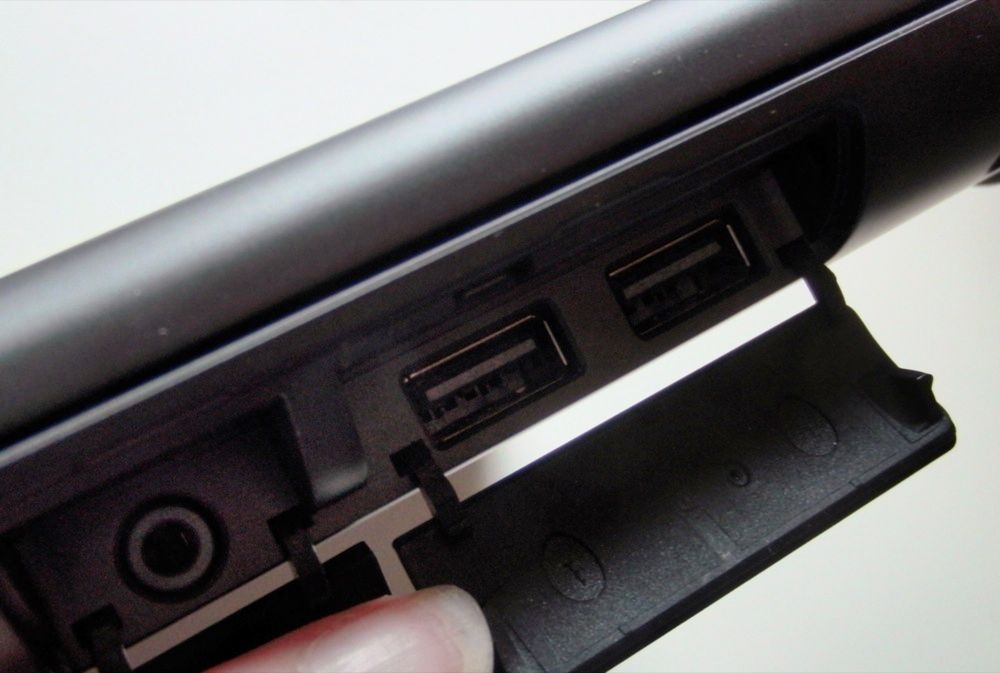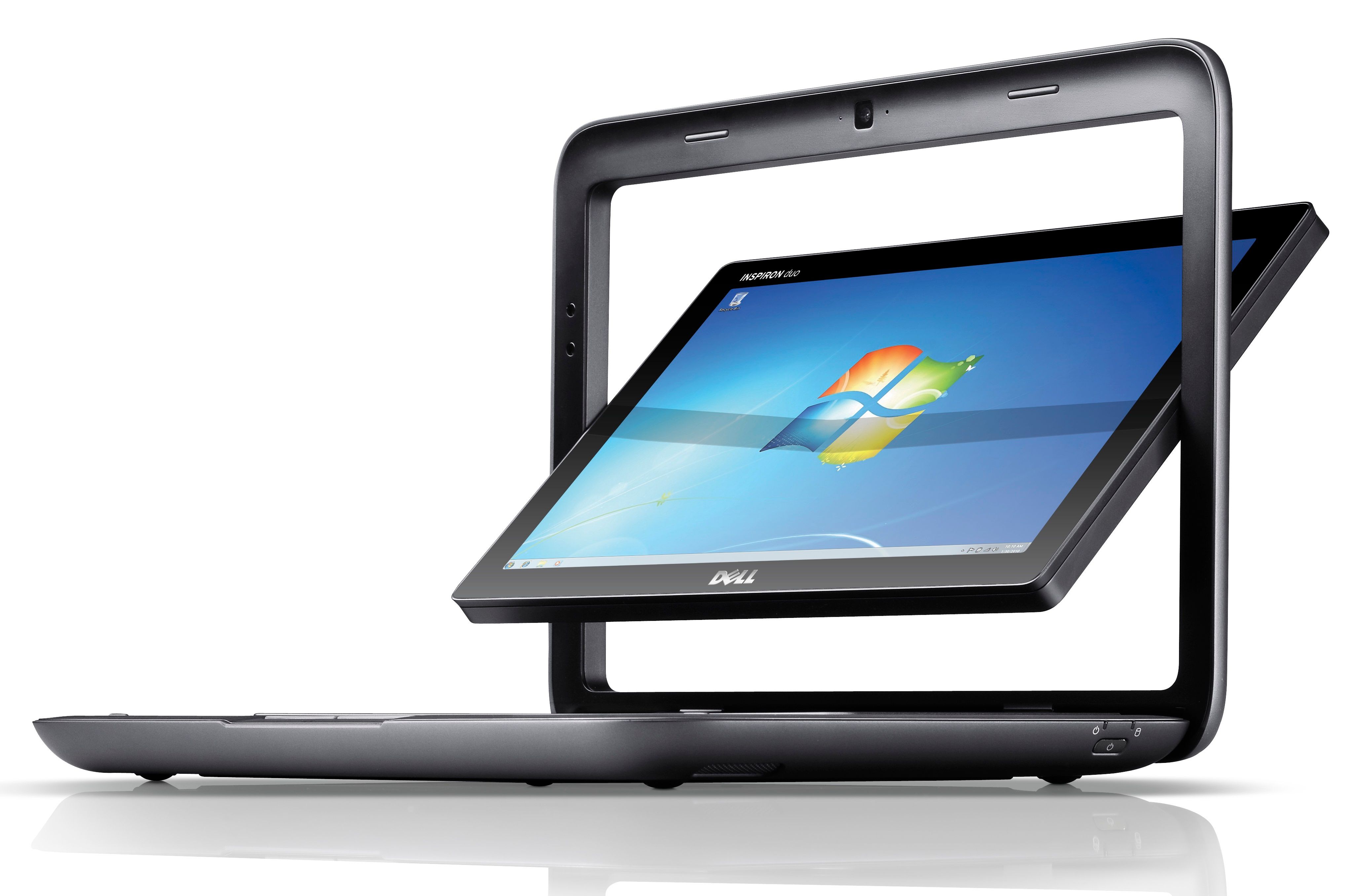Screen-flipping, keyboard-packing, rugged yet stylish; with its rotating touchscreen, real keyboard and dual core Atom processor, the Inspiron Duo looks as if it ought to be the perfect combination of high-end netbook and tablet.
Our quick take
Of all the convertible tablet PCs we’ve seen over the years, the Inspiron Duo is the most stylish and the most fun. We expected the in-place rotating screen to be a gimmick but it’s sturdy and easy to use. The keyboard is one of the best we’ve used on any netbook and the combination of the dual core Atom N550 with enough memory and the Broadcom graphics accelerator with a high resolution screen makes this a high end netbook. We love how light, portable and robust the Inspiron Duo feels - although that’s light and portable for a netbook or Windows tablet rather than standing comparison with the iPad (and the delightful design hides the fact that it’s actually a little on the heavy and thick side compared to some netbooks). But we hate the battery life; it’s a compromise too far for real portability.
Thank you to Expansys for the loan of this product.
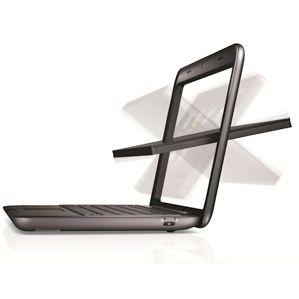
Dell Inspiron Duo - 3.5 / 5
| FOR | AGAINST |
|---|---|
|
|
Things start well, for both the netbook and tablet features. Open the Inspiron Duo like a standard netbook and you get an excellent 10.1-inch display with a resolution that doesn’t make you feel you’ve gone back in time: 1366 x 768 means you can easily have two Web pages side-by-side or you can enjoy a movie at decent resolution. The screen is beautifully bright, vivid and colourful but the viewing angles aren’t quite wide enough - especially in portrait mode - and the glare from the glossy screen can be a real problem.
The keyboard is excellent; the unusually wide bezel leaves room for large keys with rounded corners that are well spaced in the chiclet-style keyboard and make it easy to type at normal speeds - we hardly ever hit the wrong key and the smooth action and unusually deep travel for a netbook mean your fingers don’t get tired. The secondary keys like Shift and Enter are the size you expect and (apart from the backslash key which for some reason is over by the Windows key) in the layout you expect, so switching from other machines doesn’t mean retraining your fingers.
As usual with Dell, the function key row is set to the more useful multimedia, Wi-Fi and brightness controls. There’s even an option to turn off the touchpad, which is slightly recessed into the wrist rest, with two good-sized buttons, again with a very positive action. The touchpad surface is the same brushed metal as the case and it’s comfortable to use, with enough friction for the multi-finger gestures to be responsive (once you turn them all on). The generous size of the keyboard doesn’t leave as much space for the keyboard and wrist rest as on some netbooks, but then you do have a touchscreen to use as well.
You can reach across the keyboard and tap the touchscreen to select buttons or swipe to scroll, but it really comes into its own when you flip it over and turn the Inspiron Duo into a tablet. Unlike most convertibles you don’t twist the screen sideways; instead you rotate the screen vertically around two side hinges and fold the lid down over the keys as if you were closing it. This doesn’t feel flimsy or awkward because of that wide bezel and the strong magnets that hold it in place. If you want you can even flip the screen in the lid and then turn the whole unit round to look at the screen without the keyboard in the way; you have to rotate the screen manually with the Windows Mobility Center utility but it’s nice for watching videos. Once you’ve flipped the screen down into tablet mode the accelerometer rotates the screen automatically as you turn the tablet round, so you can switch to portrait mode for Web browsing but still watch movies in widescreen landscape.
One oddity; the 1.3-megapixel webcam (which has pretty good image quality but far too much contrast and is almost unusable in bright light) is where you’d expect it above the screen, in the bezel. That means it rotates out of sight when you flip to tablet mode.
Although the touchscreen is responsive for gestures like swiping through Web pages and pinching to zoom in and out, it’s not always quite accurate enough for touching small buttons and menus - and they’re still common in Windows. We’d suggest increasing the DPI to 125% to make buttons easier to touch (the high resolution means this isn’t as painful as on other Windows tablets) but Dell tries to get around it by automatically launching the Dell Stage experience when you flip the screen.
This is a launcher with links to touch-friendly apps for playing music and video and looking at your photos (including images from social networks), an ebook reader and kids painting program (which oddly doesn’t support multitouch even though Windows Paint does), plus icons to launch the browser and Games folder. The apps vary in quality; PhotoStage is a great interface for enjoying pictures but VideoStage is confusing and painfully slow, BookStage (based on the Blio ereader software and the Google Books library) doesn’t fit the screen size well. The touch apps HP puts on its TM2 consumer tablets are rather better (and you’ll enjoy reading more with the Kindle app).
The Dell Stage apps also launch and run extremely slowly compared to standard Windows applications; this is a problem with the Dell software rather than with Windows 7 or the Inspiron Duo itself because Windows Media Center - which has an interface that’s ideal for touch - opens quickly and is extremely responsive to touch, as are the games in the Microsoft Touch Pack. Even Windows Live Photo Gallery has nearly all the same features as the Dell apps in a user interface that’s touch friendly for viewing (if not for editing) and launches far more quickly. The main advantage of Dell Stage is that you can do everything easily with your fingers but when it takes this long you won’t want to.
As usual with capacitive touchscreens you can’t really take advantage of the handwriting recognition built into Windows. The Inspiron Duo has excellent “palm rejection” so resting your hand on screen doesn’t make it think you’re trying to write on it, but that works so well that if you invest in a capacitive stylus you can’t rest your hand on screen to steady it while you’re writing (that needs an active pen like the ones in business tablets such as the HP EliteBook 2740p). Writing with a capacitive stylus isn’t much smoother than writing with your finger; you can jot down quick notes and lists in Windows Journal and they’ll be recognised very accurately, and you can write a few words at a time into the handwriting input panel or type at a reasonable speed with the multitouch on-screen keyboard, but if you want to write anything reasonably long you’ll want to flip back over to the keyboard. The beauty of a convertible design is that you can do that (as long as you can sit down and do it), but it’s a shame that you have to when a combination touch and pen screen would have made handwriting so much better (although it would certainly put the price up).
Unless it’s the now-cancelled Adamo range you don’t always put Dell and stylish in the same sentence but the Inspiron Duo is undeniably good looking, with an understated interlocking design on the back of the screen complementing the brushed metal interior and black rubberised base. The dropped hinge, curved corners and smooth edges make the Inspiron Duo very comfortable to hold as a tablet (the concentric ridges and slightly rubbery feel of the base and bezel give you a secure grip too). But keeping the grip comfortable results in a minimalist approach to ports; there are hardly any. The power switch is set low on the right (convenient in tablet mode), the power connecter is on the left and two snug-fitting covers conceal two USB ports and a combo headphone/microphone socket - and that’s it. No VGA or DisplayPort, no Ethernet (we’re not sure how many users will miss it), not even an SD card reader for taking pictures off your camera. You can slide off a cover on the base to fit a SIM card to use 3G, but otherwise the Inspiron Duo is a sealed unit.
That helps make it sturdy and keeps the dust out - but it also means you can’t carry a second battery, which turns out to be a problem. The disappointing battery life is probably the biggest drawback. With the same processor (but less memory) the Asus Eee PC 1015M can give you anything from 6 to 8 hours of battery life. The Inspiron Duo struggles to manage 3.
The unresponsive Dell touch apps aren’t representative of performance generally, which is what you’d expect of a dual core Atom; not much faster than a single core Atom when you’re using one program at a time but giving you that same performance for two applications running at once. 2GB of memory and the fast (7200rpm) and large (320GB) hard drive don’t slow things down; the Inspiron Duo boots in 30 seconds and takes 23 seconds to resume from hibernation. And the Broadcom HD chip means video performance is definitely better than you’d expect of a netbook; streaming 720 and even 1080p video from the Web was impressively smooth and detailed and we were able to enjoy smooth playback of a 720p movie over Wi-Fi from our local network without any of the freezing or jumping we’ve seen on other dual core Atom systems.
The sound quality from the built-in speakers is quite reasonable; there’s a surprising amount of bass, although the treble is rather tinny, and the volume is loud enough to enjoy a movie as long as you’re sitting close to the screen. For better sound you need the optional dock, which has JBL speakers, an SD slot and Ethernet port (though still no VGA or HDMI connection) and holds the screen up like a picture frame.
To recap
Think of the Inspiron Duo as high-end netbook and you’ll be happy with it; think of it as a high-end netbook that converts into a tablet and you’ll be even happier. Think of it primarily as a tablet and you’ll feel a little disappointed (although the less you use the Dell Stage apps the more you’ll like touch). Buy it if you know you want a basic Windows tablet with the backup of a keyboard that also happens to be a great netbook in everything except battery

